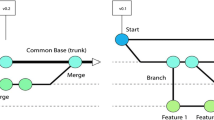Abstract
Social epistemology studies knowledge and justified belief acquisition through organized group cooperation. To do this, the way such group cooperation is structured has to be modeled. The obvious way of modeling a group structure is with a directed graph; unfortunately, most types of social cooperation directed at epistemological aims are variably implementable, including in their structural expression. Furthermore, the frequency with which a practice is implemented in a certain way can vary with topology. This entails that the topology of social practices directed toward epistemological ends has to be modeled by a set of directed graphs, or their equivalent, together with a probability distribution over that set. In theory, this is eminently possible; however, there are considerable practical obstacles to the specification of a practice’s topology in this way. This paper examines these practical difficulties and concludes that todays sampling protocols are either far too slow to handle pratices with 10 or more participants, or else prone to produce misleading evaluations.



Similar content being viewed by others
Notes
The fastest known algorithm by Luks and Brooksbank (2008) can establish whether two graphs are isomorphic in \(2^{O(\sqrt{n log n})}\).
This is a very generous assumption considering that Nauty—the best extant computer program for detecting isomorphisms that works using a cannonical labelling algorithm and not Luks’ (1982) algorithm—takes, on average, between tenths of a millisecond (for graphs of order less than 10) and a tenths of a second (for graphs of order circa 1000) to establish whether two graphs are isomorphic on a standard desktop (Foggia et al. 2001).
References
Babai, L., Erdôs, P., & Stanley, S. M. (1980). Random graph isomorphism. Society for Industrial and Applied Mathematics Journal on Computing, 9(3), 628–635.
Bonjour, L. (1985). The structure of empirical knowledge. Cambridge, MA: Harvard University Press.
Blondel, V. D., Gajardo, A., Heymans, M., Senellart, P., & Van Dooren, P. (2004). A measure of similarity between graph vertices: Applications to synonym extraction and web searching. Society for Industrial and Applied Mathematics, 46(4), 647–666.
Bunke, H. (1999). Error correcting graph matching: On the influence of the underlying cost function. IEEE Transactions on Pattern Analysis and Machine Intelligence, 21(9), 917–922.
Coady, C. A. J. (1992). Testimony. Oxford: Oxford University Press.
Foggia, P., Sansone, C., & Vento, M. (2001). A performance comparison of five algorithms for graph isomorphism. In Proceedings of the 3rd IAPR TC-15 workshop on graph-based representations in pattern recognition (pp. 188–199).
Frank, O., & Strauss, D. (1986). Markov graphs. Journal of the American Statistical Association, 81, 832–842.
Gilbert, E. N. (1959). Random graphs. Annals of Mathematical Statistics, 30, 1141–1144.
Goldman, A. I. (1999). Knowledge in a social world. Oxford: Clarendon Press.
Luks, E. M. (1982). Isomorphism of graphs of bounded valence can be tested in polynomial time. Journal of Computer and System Sciences, 25, 42–65.
Luks, E. M., & Brooksbank, P. A. (2008). Testing isomorphism of modules. Journal of Algebra, 320, 4020–4029.
Messmer, B., & Bunke, H. (1998). A new algorithm for error-tolerant sub-graph isomorphism detection. IEEE Transactions on Pattern Analysis and Machine Intelligence, 20(5), 493–504.
Olsson, E. J. (2005). Against coherence: Truth, probability, and justification. Oxford: Oxford University Press.
Olsson, E. J. (2011). A simulation approach to veritistic social epistemology. Episteme, 8(2), 127–143.
Pattison, P. E., & Wasserman, S. (1999). Logit models and logistic regressions for social networks. II. Multivariate relations. British Journal of Mathematical and Statistical Psychology, 52, 169–194.
Robins, G. L., Pattison, P. E., & Wasserman, S. (1999). Logit models and logistic regressions for social networks. III. Valued relations. Psychometrika, 64, 371–394.
Robins, G., Pattison, P., Kalish, Y., & Lusher, D. (2007). An introduction to exponential random graph (p\(^{\ast }\)) models for social networks. Social Networks, 29(2), 173–191.
Skvoretz, J., & Faust, K. (1999). Logit models for affiliation networks. Sociological Methodology, 29, 253–280.
Snijders, T. A. B. (2002). Markov chain Monte Carlo estimation of exponential random graph models. Journal of Social Structure, 3(2), 1–40.
Strauss, D. (1986). On a general class of models for interaction. SIAM Review, 28, 513–527.
Vallinder, A., & Olsson, E. J. (2012). Does computer simulation support the argument from disagreement? Synthese, 190(8), 1437–1454.
Watts, D. J. (1999). Small worlds. Princeton, NJ: Princeton University Press.
Author information
Authors and Affiliations
Corresponding author
Rights and permissions
About this article
Cite this article
Masterton, G. Topological variability of collectives and its import for social epistemology. Synthese 191, 2433–2443 (2014). https://doi.org/10.1007/s11229-014-0433-2
Received:
Accepted:
Published:
Issue Date:
DOI: https://doi.org/10.1007/s11229-014-0433-2




